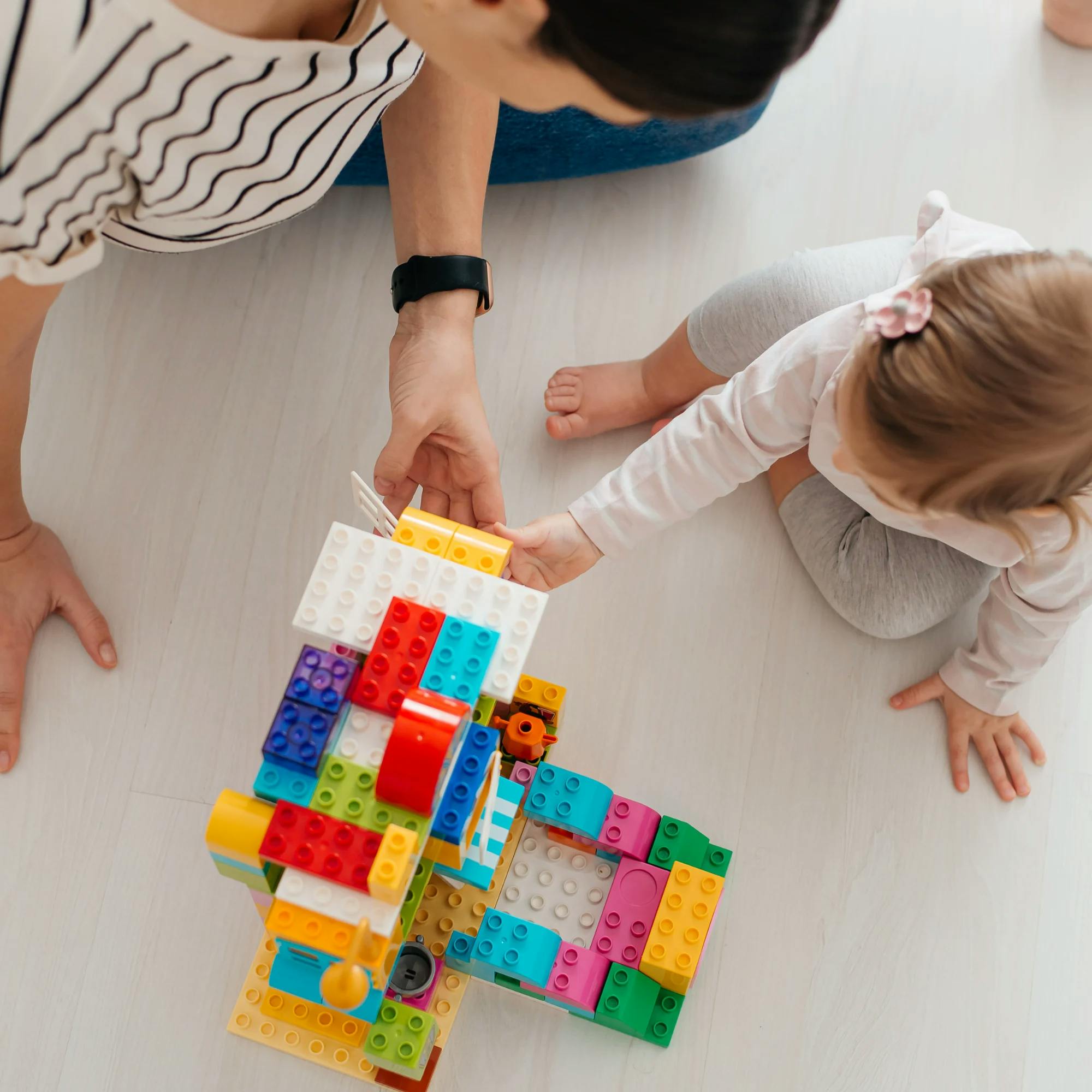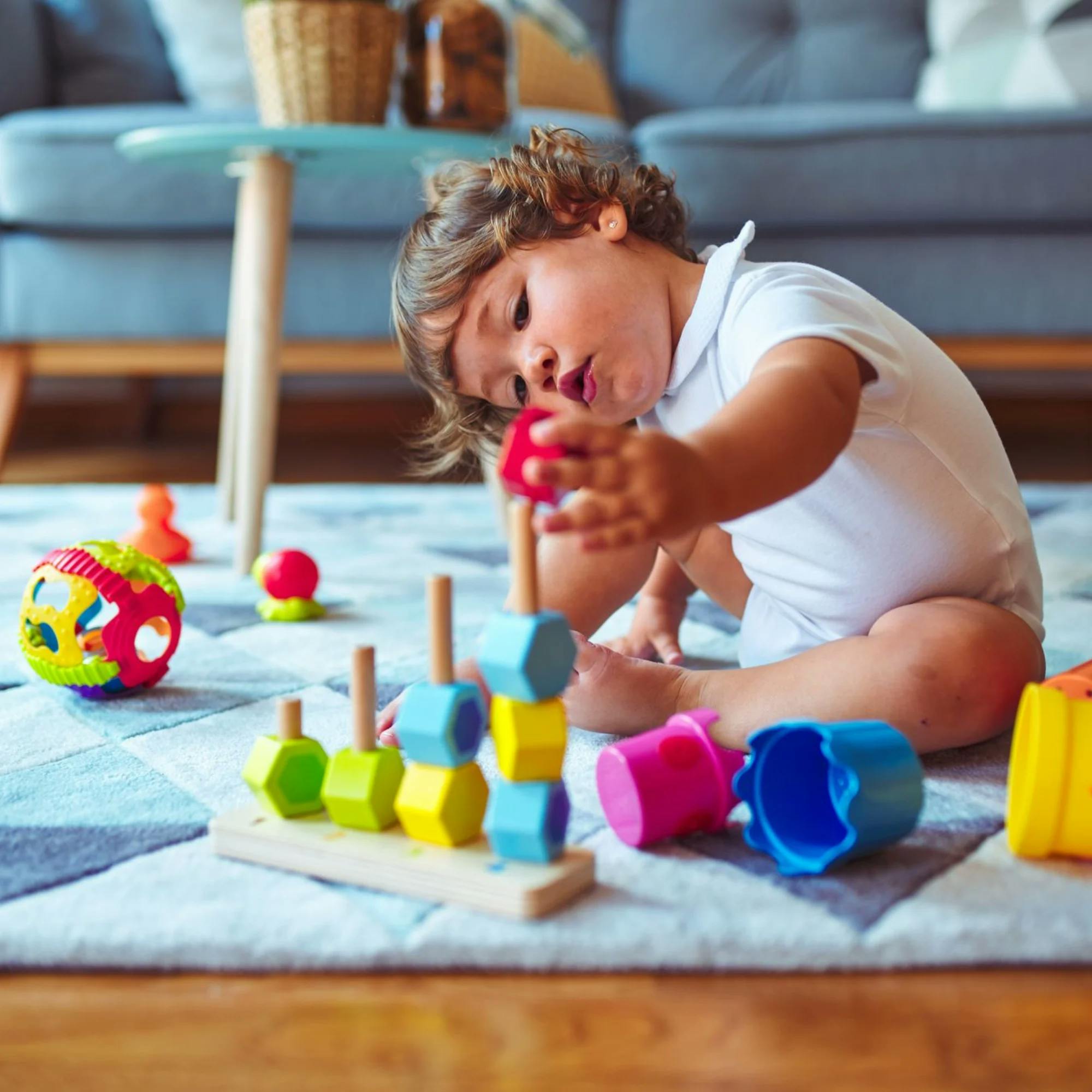
How to Help Your Child Use Gestures and Signs to Communicate
 Abby Barnes, M.S., CCC-SLP
Abby Barnes, M.S., CCC-SLP
When your child isn’t yet able to talk, it can be tough trying to figure out what they need. We’ve all had those moments where a child fusses or bursts into tears for seemingly no reason. If only they could just tell us what they want, right then and there!
What if there was a way you could help your child communicate in these situations, even before they’re able to say their first words? Good news–there is! In this article, we’ll explore how to interpret your child’s nonverbal language. You’ll also learn how to help them communicate through baby sign language and gestures. Fewer tears and less frustration for all!
Communication isn’t just talking
To get a better grasp on this topic, let’s start with the basics: defining communication. Communication is made up of so much more than the words we say. It also includes nonverbal communication. These are things such as body language, facial expressions, pointing, and using gestures and signs.
In young children, there is an entire world of nonverbal communication development that happens long before those special first words. Think about it:
The first smile your baby gives you
Your toddler pointing toward something they want
The scrunched-up face they make when trying a new food
Using hand signs for words like “eat,” “drink,” or “go”
All of this is nonverbal communication!
How to read your child’s nonverbal language
You can generally tell what your child is trying to communicate–and how they’re feeling–based on their nonverbal cues. When you pay attention to those cues, it gives you a peek inside your child’s thoughts. It also increases the bond you share with your baby and can make you more responsive to their needs. Here’s how to do it:
1. Watch your child’s facial expressions. Do they seem happy or sad? Curious, tired, frustrated?
2. Then, take a moment to scan your child’s environment. Is there something out of reach they’re eyeing and trying to get? Is there a toy you just showed them that made them giggle?
3. Finally, think about their day so far. Is it close to mealtime or bedtime? Are they hungry? Did they miss their nap? All of those factors can lead to big feelings in little kids.
By observing your child’s nonverbal language along with their environment, you can often find clues as to why they’re feeling the way they are. Of course, no matter how “in tune” you are with your baby, there will be times when you can’t decipher what they’re trying to tell you. But by using these tips, you should have some idea what’s going on in their head!


What are signs and gestures? Why are they important?
We define a sign or gesture as any action or movement of a part of the body, especially the hands or head, used in order to communicate an idea or meaning. Many gestures we make with our hands, like pointing or waving. Many signs are derived from American Sign Language.
Did you know that research has shown that a baby’s ability to use gestures is one of the stronger predictors of later language success? Studies also show that children who produce more gestures early on will develop larger expressive vocabularies as they age. One landmark study showed that children who first produced a gesture and word combination were more quickly able to combine words together to create short, two-word phrases. That’s a quintessential milestone for 2-years-olds!


Before we talk more about signs and gestures, let’s get one thing out of the way: Teaching baby sign language does not cause a delay in speech and language development. This is a misconception I commonly hear from caregivers. They raise the concern, understandably, that if a baby can express their needs with simple gestures, won’t they be less motivated to learn words?
That’s not the case, and it’s not rooted in fact or research. If anything, teaching a baby sign language along with words helps promote language growth. Signs simply allow children to more easily express themselves when the words aren’t yet available.
Teaching a baby sign language along with words helps promote language growth.
As children begin to learn and imitate sounds and words, and their verbal vocabulary grows, these gestures usually fade away. What’s important is that you model both gestures and words when you’re introducing signs.
Now let’s discuss how you can teach and promote gestures with your kiddo.


How to teach signs and gestures to your baby
Let’s use an example related to my favorite activity, and I’m sure one of your child’s as well: eating! Pretend it’s almost lunchtime and you know your baby is hungry. So they begin doing what babies do best, crying.
Think about how the situation would normally progress. Do they continue crying until you give them food? If this is the typical pattern for your child, try changing that behavior by giving them a simple sign to use instead.
As your child is crying, show them the food and wait a few seconds. If they don’t gesture toward the food, then model a sign like “more,” “eat,” or “hungry.” Prompt your child to imitate you, and then give them the reward–in this case, their food! You can also reinforce these signs by placing your hand over their hand and guiding them through the motions. So you could help your child make the sign for “are you hungry?” Or model “all done!” after your child has finished their meal.
Now of course, mealtime is just one of many opportunities to use signs and gestures. You can teach your baby a variety of signs for a variety of functions and activities! Some helpful functional words to begin with include:
More
Eat
Drink
Please
Help
Milk
Hungry
Water
All done
Go
For demonstrations of how to make these signs, check out this video or these animations. You can also follow along and read through this list.
Another important and powerful gesture is pointing. By the time your baby turns one year old, you should notice them beginning to point to desired objects.
Next time your child is crying or upset and unable to communicate what they need, ask them to show you what they want. You may need to point to various items you suspect your baby may want in order to prompt them to point.
Here’s an easy activity to try: Provide choices of items your child may like. Maybe two different snacks, or two different toys. Ask them which one they want, and see if they will point and show you!
Practice and celebrate!
Remember, it may take a lot of repetition before your child begins imitating your signs and gestures. So practice frequently. And don’t forget to offer tons of positive reinforcement when they do a job well done! As your child learns to gesture more and more, they’ll begin to make the connection between your praise, smile, clap, or exaggerated voice and the action they’re performing. This will encourage them to communicate more, which leads to further speech and language development!
As a speech-language pathologist, I want you to feel confident that you can better understand what your child is trying to tell you and help them communicate through signs and gestures. Remember, your child’s first word doesn’t have to be the only milestone you anticipate. The first signs and gestures are just as much communication as speech, and they can feel just as magical to witness. Be proud of your little one when they accomplish this. And give yourself a pat on the back, as well!











